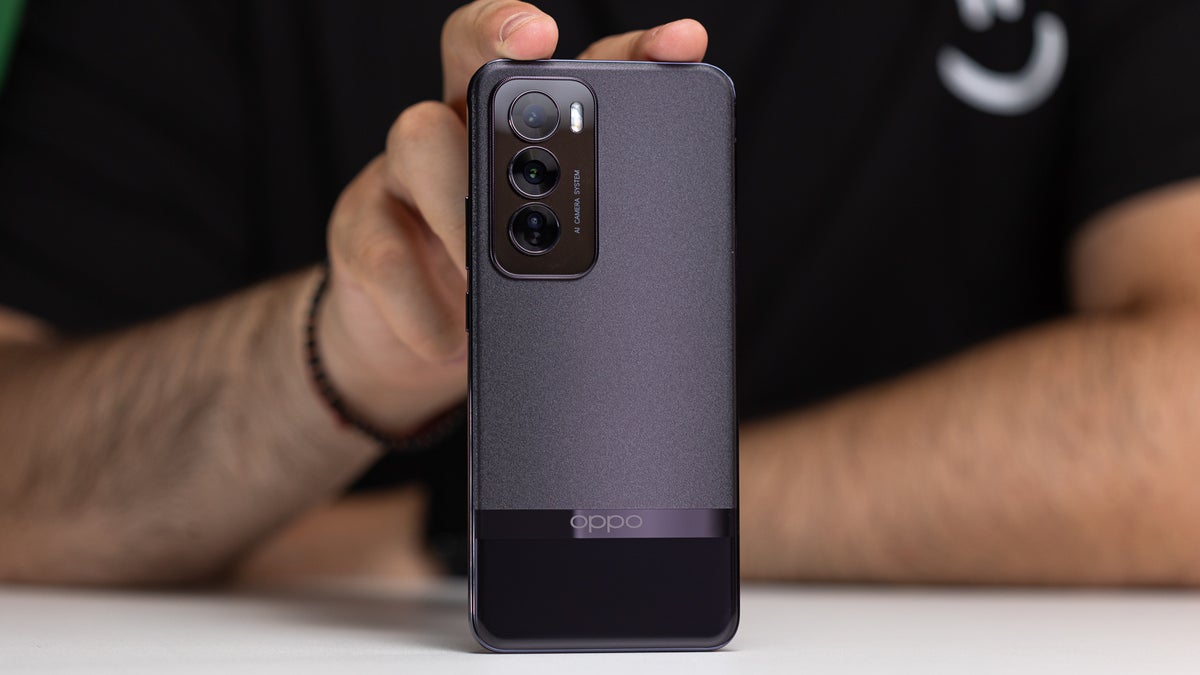Oppo Reno 12 Pro Intro
Oppo’s Reno series is a bit of an oddball — they are sort of upper-range in performance, but usually put a lot of emphasis on camera quality and features. It’s sort of an experimental platform that always has something to throw at us — this time around, Oppo decided to launch its new AI features with the Oppo Reno 12 and Reno 12 Pro. But fear not, impressive cameras are also in tow.
In the case of the Oppo Reno 12 Pro, we have a 50 MP main camera, 50 MP 2x telephoto camera, and yet another 50 MP front-facing camera. That’s a triple 50, enhanced with AI algorithms for image post-processing and editing.
Other AI features are catching up with the industry — generative photo editing, summarizing recordings and web pages, and cutting yourself out of a photo to generate a sticker. But there are also some fresh ones for boosting phone connectivity, which is interesting.
The Reno 12 Pro will cost €599 in European markets. Oppo’s phones are not officially available on the US, but keeping an eye on them usually shows us what sister company OnePlus may have in store for the near future.
So, we have the Oppo Reno 12 Pro in our hands right now! Here are our impressions:
Table of Contents:
Oppo Reno 12 Pro Specs
Enter Dimensity 7300
The Oppo Reno 12 Pro is one of the first phones with MediaTek Dimensity 7300 that we get to see. It’s a brand-new chip, built on a 4 nm process, that focuses on energy efficiency with little compromise in power.
| Specs | PHONENAME |
|---|---|
| Size and Weight | 6.36 x 2.94 x 0.29 (161.5 x 74.8 x 7.4 mm) 6.35 oz (180.0 g) |
| Display | 6.7″, AMOLED, 1080 x 2412 |
| Processor | MediaTek Dimensity 7300, 4 nm, 2.5 GHz |
| Software | ColorOS 14.1 / Android 14 |
| Cameras | 50 MP main 50 MP 2x telephoto 8 MP ultra-wide 50 MP selfie |
| Battery Size | 5,000 mAh |
| Charging Speeds | 80 W SuperVooc wired |
Oppo Reno 12 Pro Design and Display
Integrated armor

Thin, rounded, and effective (Image credit – PhoneArena)
The Reno 12 Pro has an “alloy” frame — which feels like very strong, glossy plastic — and a Gorilla Glass Victus 2 front. The back differs, depending on your choice of color — our Space Brown unit here has a grainy finish with a strip of gloss on the bottom, while the Nebula Silver model has a shiny back with a liquid-like paintjob underneath.
Oppo takes great pride in the construction of the Reno 12 Pro — it’s built to withstand drops and sudden pressure (like sitting on the phone), and there’s internal cushioning to protect the components. We can’t say we’ve tested those claims, but what we can say is that the phone feels ergonomic and comfortable — easy to hold on to. It’s splash-proof, too — there’s no IP rating, but manufacturers sometimes skip the IP rating to save on costs, while the phone still has safety seals for ingress protection.


Generous box contents (Image credit – PhoneArena)
In the box, you will find the SuperVooc charger and a USB C cable to work with it. There’s also an understated rubber case, which will hide the dual finish on the back of the phone, but it will improve grip a bit.
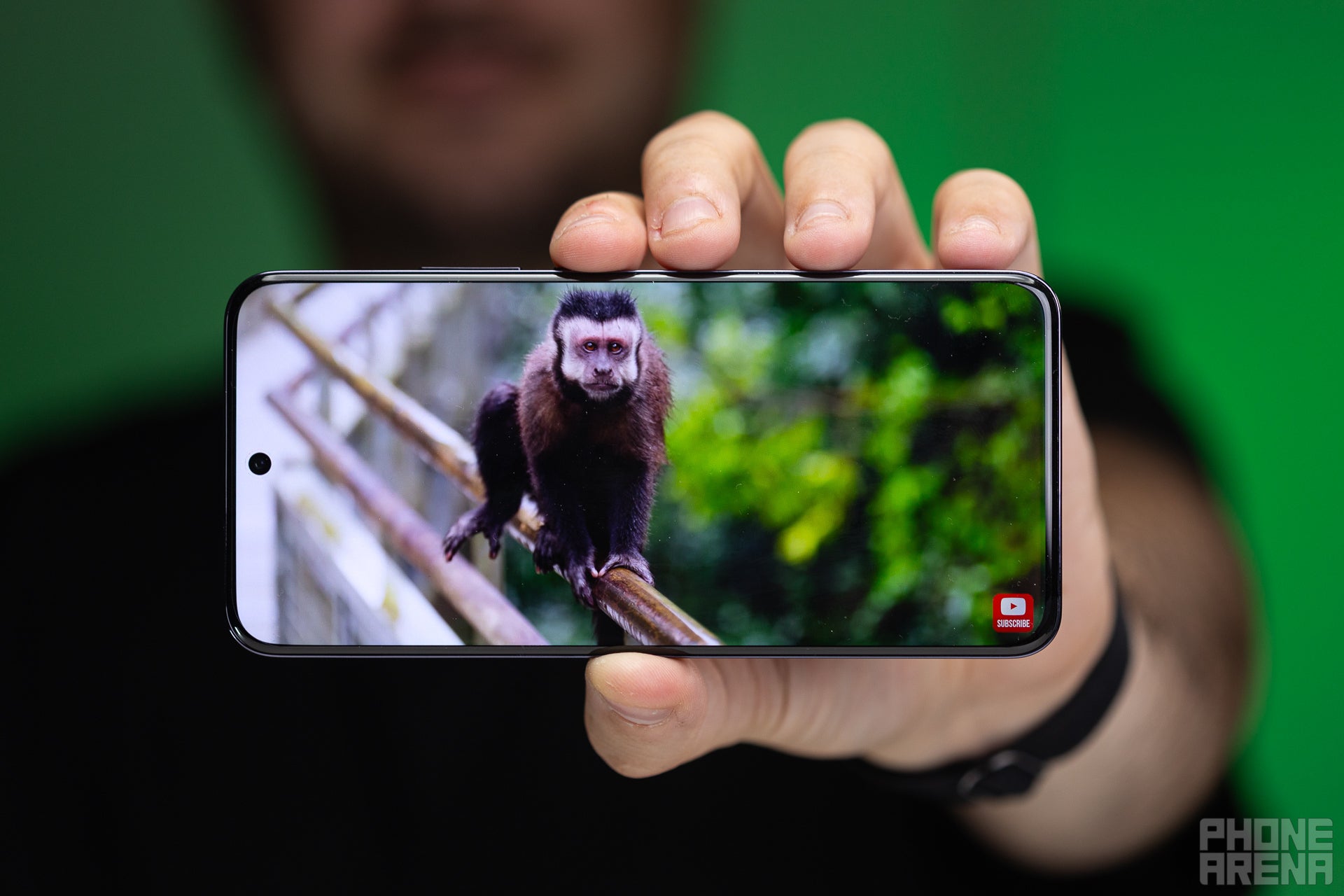

Pretty OLED (Image credit – PhoneArena)
Colors can be saturated and punchy, but you can dial them down to more realistic levels. Of course, extra features like auto white balance and blue filter are on board.
We measured 1,200 nits max brightness, which is excellent and ensures screen content remains visible out in the daylight. A minimum of 2 nits for bedside viewing is also very good for almost all eyes, save for those that are extra-sensitive.
Our color measurements show that the screen is slightly skewed towards bluish-greenish tints, which is typical for contemporary AMOLED panels. But, again, the software can dynamically adjust color temperature depending on ambient lighting.
There’s an under-screen fingerprint scanner on board, which Oppo is incorporating in the overall software experience. If you hold down on it while unlocking the device, a few pre-set shortcuts will pop out. This way, you can get into your favorite apps with a simple tap and swipe.
Oppo Reno 12 Pro Camera
50, 50, and 50. OK, there’s also an 8


The Oppo Reno series typically explores top-tier camera specs and features. The Reno 12 Pro comes with a 50 MP main sensor, 50 MP 2x telephoto camera, and 50 MP selfie snapper. The ultra-wide camera is 8 MP and it kind of falls behind from the rest in the flock — it’s an “at least it’s there” situation.
Our benchmark does also take into consideration how the app and viewfinder behave while using the phone. So, let’s take a look at how the photos from the Oppo Reno 12 Pro actually look:
The photos are serviceable, but not amazing. The main camera’s colors are amped and often — all over the place. Specifically skintone can be way off, depending on lighting. The details are soft and dynamics are harsh — the photos look very bright, yet dark spots are close to crushed.
A 5x zoom from the camera looks decent — even if sharpening and noise reduction are becoming evident, there isn’t a huge loss in quality compared to regular photos. At 10x, however, you can see the photos starting to turn into paintings.
The selfie camera, surprisingly, gave us colors that are much tamer, closer to reality, with more realistic skintones, too. As for portraits — subject separation is good, if a bit aggressive around hairlines. The bokeh in the back is not over the top and we appreciate it. But our subjects’ faces were a bit too smoothed out by the processing.
Video Quality

Videos are OK, but not amazing. They generally suffer from the same setbacks as photos — exposure is a bit too high, yet shadows don’t get much of a boost. Colors are a bit skewed, and stabilization can be a bit jittery. We do like that smooth zoom effect though.
Oppo Reno 12 Pro Performance & Benchmarks
New chip, modern tech
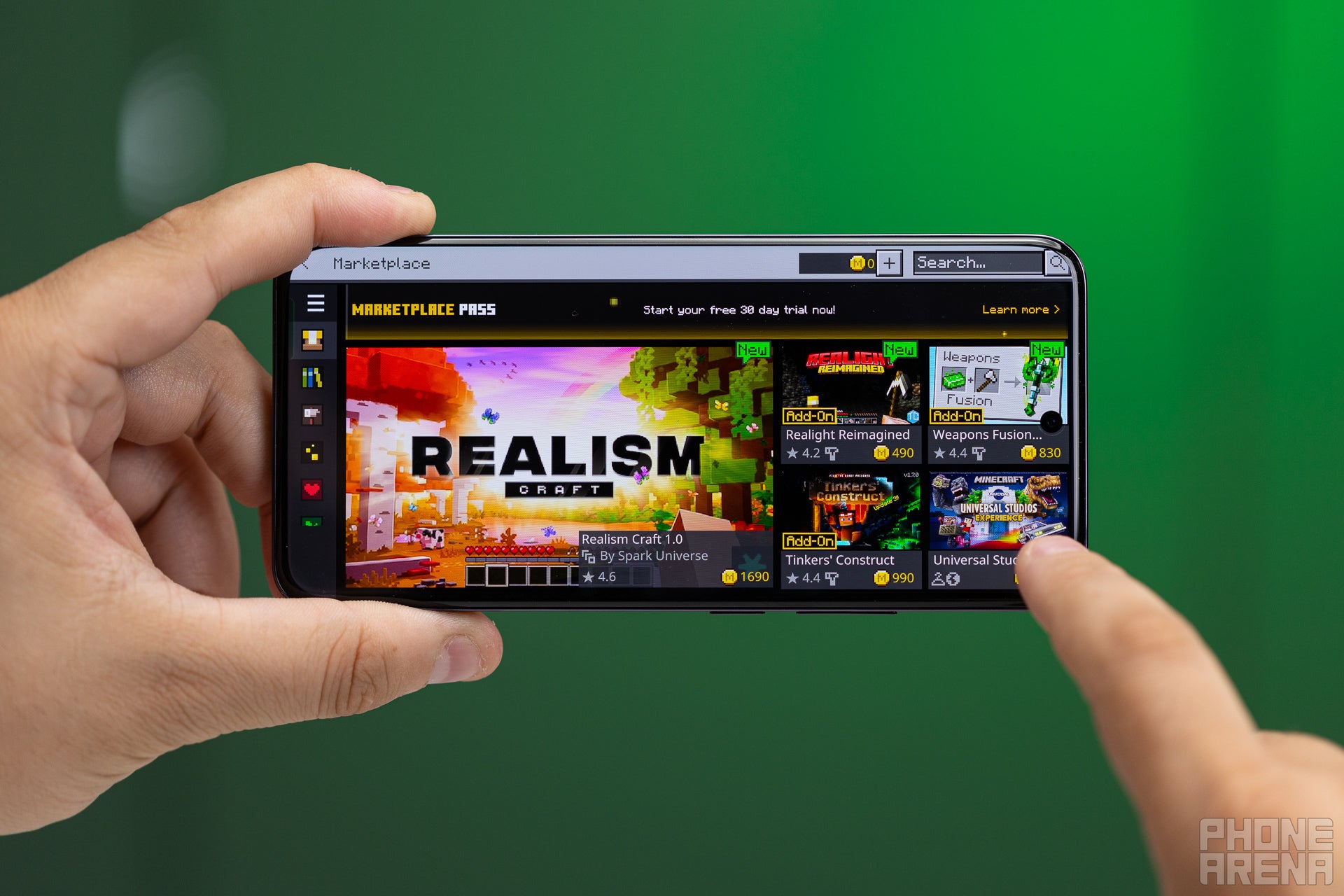

Benchmarks refuse to install on our pre-sales unit here right now. So, we can only comment on how the device feels and reacts — it’s not slow per se, but definitely slower to respond than the flagships we are used to. There’s a slight touch lag, and sometimes the phone stutters before launching you into an app, or popping out the keyboard. For what it’s worth, the AI features work decently fast — at least, up to par with competitors like the Galaxy S24.
Oppo Reno 12 Pro Software
The Reno 12 Pro should ship with ColorOS 14.1 on board — our pre-sales unit has ColorOS 13.1. It’s a very feature-rich reskin of Android 14. It has the previously mentioned floating sidebar, which can hold shortcuts to your favorite apps, a clipboard, with which you can drag-and-drop files and copied text in and out of any app; and it holds the AI toolbox, which will be visible in the sidebar whenever the content on-screen allows for AI features to be used.
That aside, ColorOS has plenty of smart shortcuts and quality-of-life improvements — a quick one-hand mode gesture, quick-launch and app from a fingerprint scan, multiple display color calibration options, customizable big app folders for the homescreen, and much more.
Oppo hasn’t made specific promises about the update cycle, so we assume it’s the standard 2 years of Android, 3 years of security updates.
What are the Oppo Reno 12 Pro AI features?
The Oppo Reno 12 Pro comes with the full monty of contemporary AI features:
- AI Summary – summarize long articles or voice recordings
- AI Writer – helps you write a more elaborate, a shorter, or a more polite message
- AI Speak – text-to-speech to read long articles to you
- AI Eraser 2.0 – smart eraser that generates the missing background
- AI Clear Face and AI Best Face – sharpen faces in group photos, remove blinking or other issues in a single photo
- AI Studio – put your face on a variety of cartoon avatars
AI Summary lives in your sidebar, so you can use it for any browser, any document open in any app on your screen. It does what it says on the tin, but we’d say it functions worse than the AI Summary in the Galaxy S24. Oppo’s AI does split an article up in bullet points, but they are still a bit long. Also, it mostly just copy-pastes the original text, amending a few words — so the summary may not sound concise or very clear for a quick read-through.
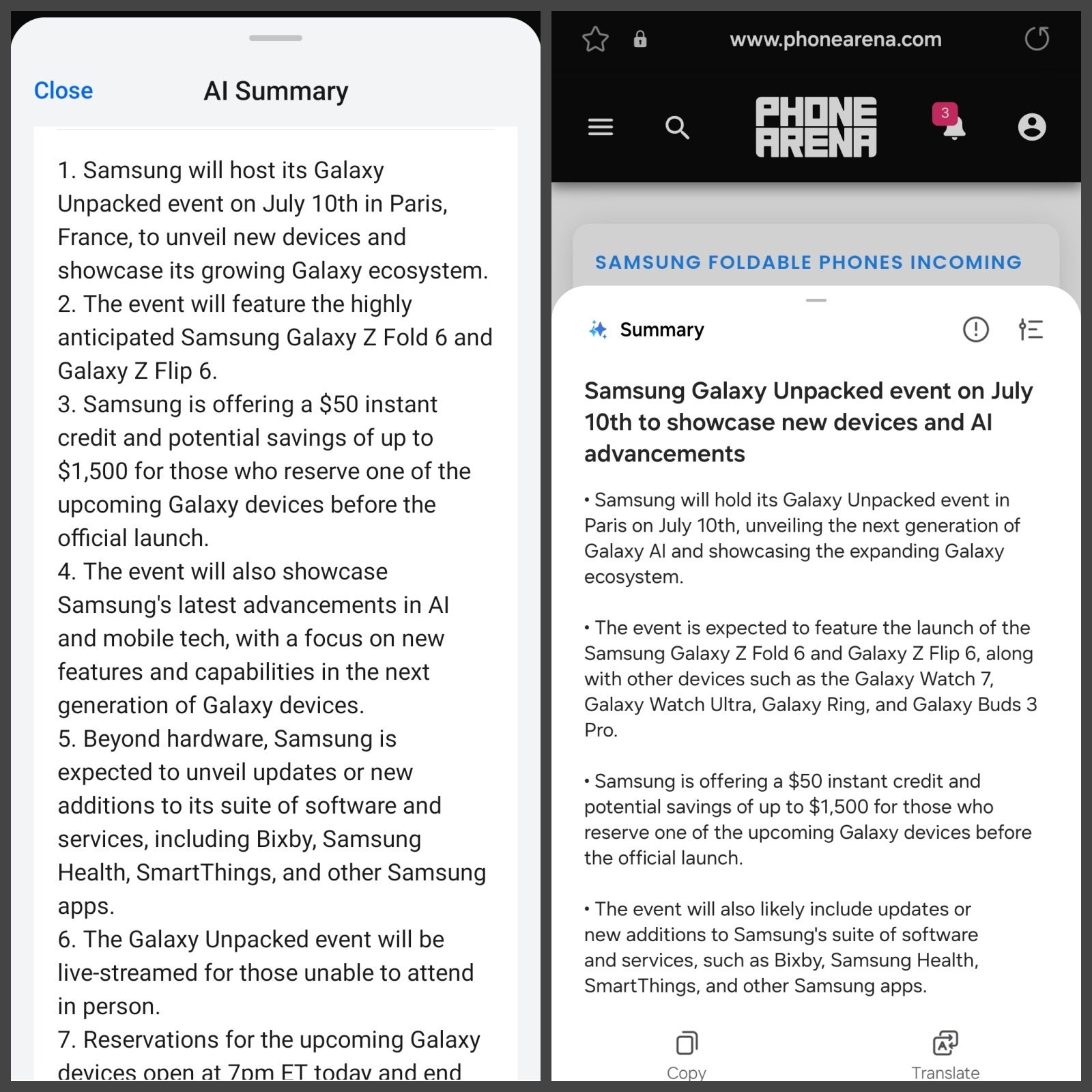

Same article. Left – Oppo summary. Right – Samsung summary
Contrary to that, the AI Writer is pretty good at figuring out exactly what we want to say and write out a pretty long email. You are still expected to do a once-over and replace any [Placeholder text] before sending your message.
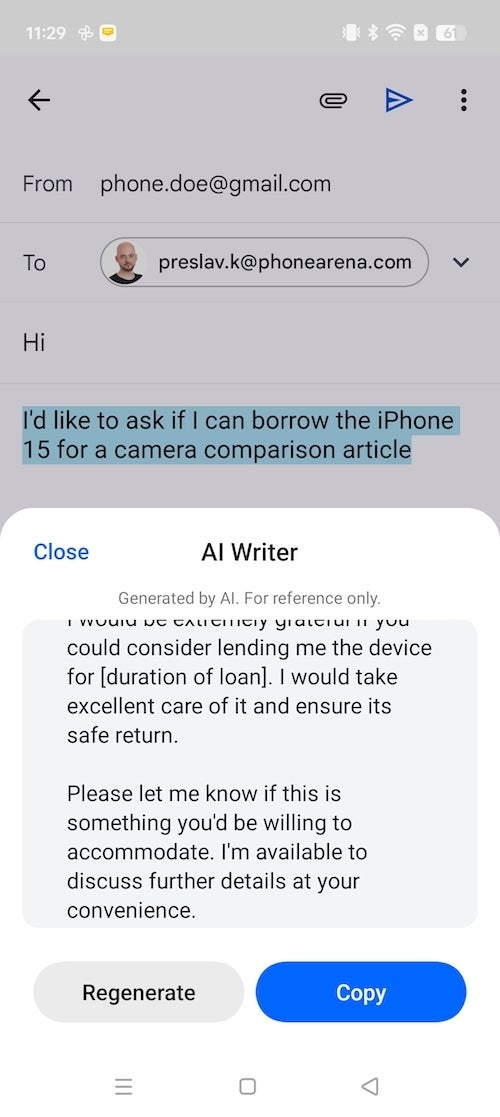

AI writing my email for me, formalities and all
AI Speak can read a website, document, or even book in either male or female voice. It sounds pretty realistic, but it’s nothing new — we’ve had machine learning text-to-speech engines for a while now. It also can’t pick out what’s the important part of a website — it just reads out loud through all the ad banners, website menu options, author name, comments, et cetera. It would’ve been “true” AI if it could figure out where the article is, right?
AI Eraser 2.0 looks pretty impressive on videos we’ve seen online, but sadly doesn’t exist on our unit right now.
AI Clear Face and AI Best Face are available for photos where you have at least 3 faces. Clear Face will apply an ever-so-subtle dose of sharpening around faces — hardly noticeable if at all. AI Best Face will make sure nobody in the frame is blinking or grimacing weirdly by substituting their face with one from a frame taken before or after taking the photo. The latter feature will be coming in Q3 2024.
AI Studio is a separate app that allows you to generate cartoon avatars with your face on them. Kind of… depending on which one you pick. Again — nothing new, and the choices and avatar poses are limited.
Oppo Reno 12 Pro Battery
Long life promise
The Reno 12 Pro sports a 5,000 mAh battery, which is the flagship standard nowadays. It has a more energy-efficient processor, which had our hopes up for a longer battery life. However, our benchmark above shows that it’s comfortably staying with the flock. 12 hours of browsing is around the upper end but, for example, but most flagships today give us 15 hours. On the flip side, 10 hours of video streaming (YouTube) is about what we expect from most upper-range phones nowadays.
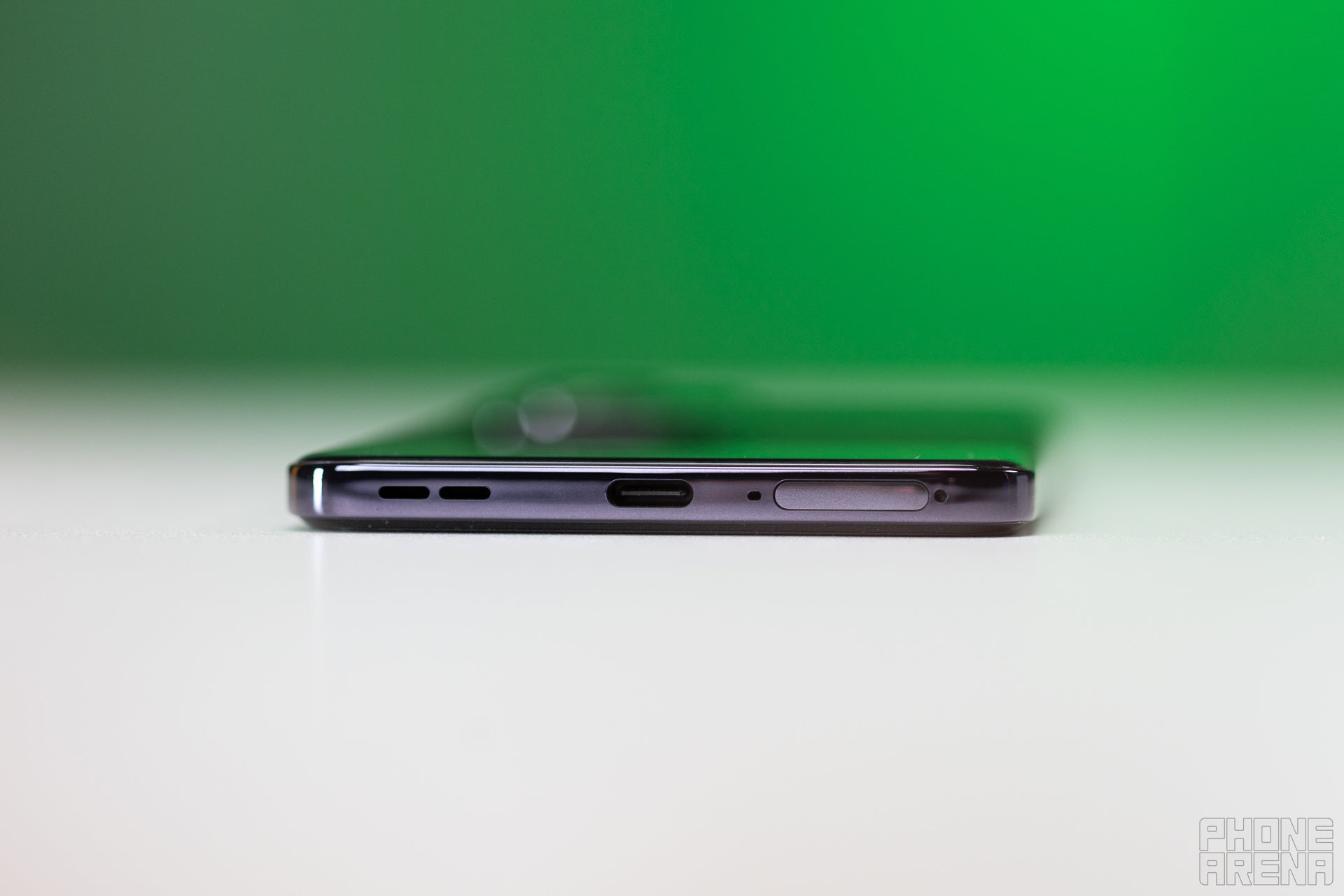

The good news is that the Oppo Reno 12 Pro charges super-fast with the 80 W SuperVooc charger it comes with. 76% in 30 minutes is basically almost topped out. If you have a bit more time — 41 minutes gets you the full 100%.
The bad news is that it supports absolutely no wireless charging.
Oppo Reno 12 Pro Audio Quality and Haptics
The Reno 12 Pro rocks stereo speakers in the familiar earpiece-bottom driver format. The volume gets quite loud and — when you are holding the phone and looking at it straight-on, you can hear a good amount of mids, kind of harsh in the highs. There’s some bass, but it lacks detail or prominence. Placed on a table, it immediately sounds harsher in the upper midrange register.
In other words, we’d watch YouTube videos with this phone, but we wouldn’t stream our music directly through the speakers.
Should you buy it?
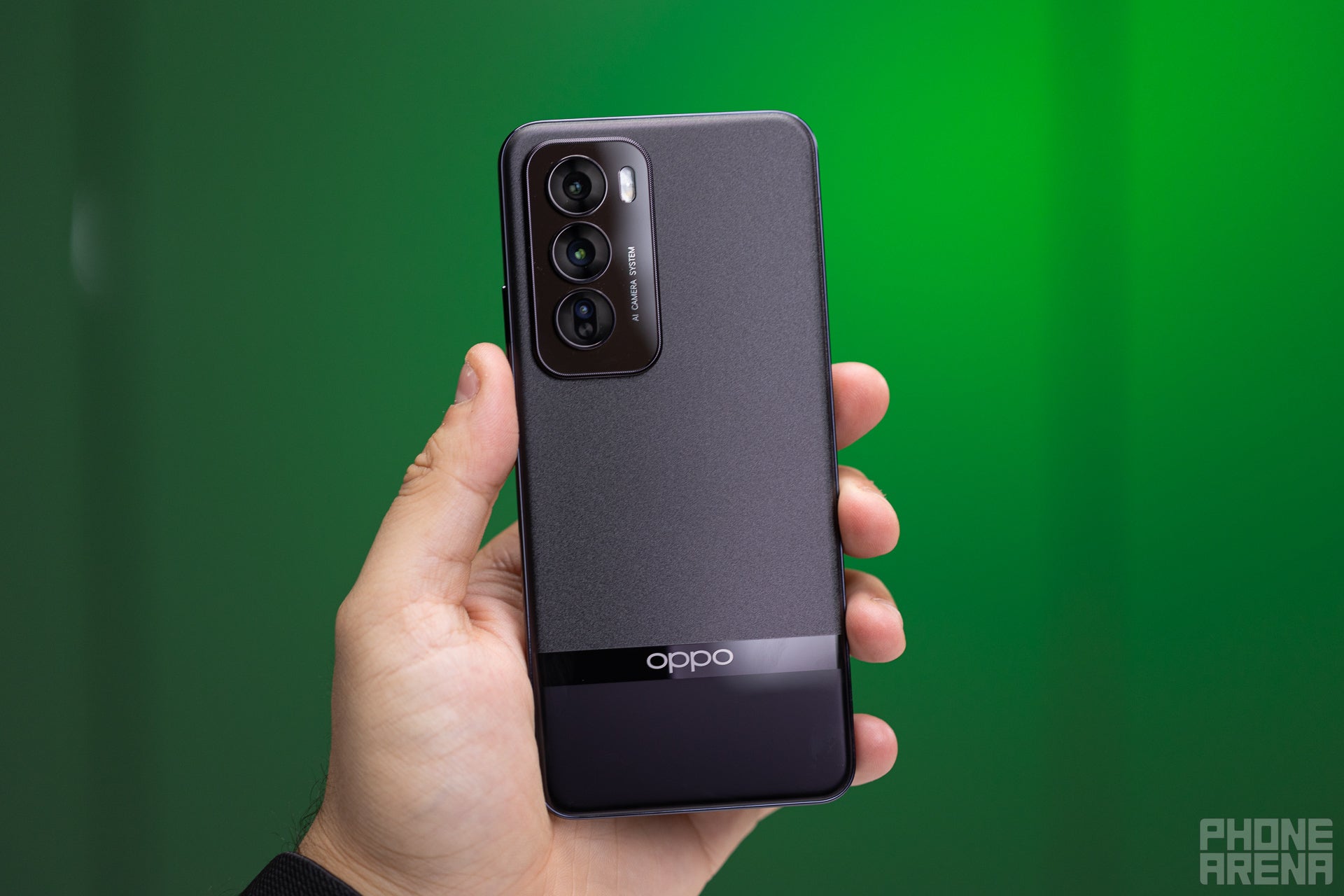

The Oppo Reno 12 Pro is an interesting alternative if you want to try an AI feature-rich phone, but don’t want to pay flagship money. It’s basically half the cost of a Galaxy S24, but doesn’t cut out any AI features — even if some of them don’t work as good. But we feel like it comes short in some areas, at least for now.
The camera is not bad, but certainly not as impressive as the specs suggest. It does get beat out by competitors such as the Google Pixel 8a. The Reno 12 Pro’s performance is OK, with some input lag — combined with the plasticky feel of the frame, it’s also not the most premium-feeling phone out there. If that’s what you’re after — the Motorola Edge (2024) is about the same price but offers snappy performance and a higher class of build materials.
👇Follow more 👇
👉 bdphone.com
👉 ultraactivation.com
👉 trainingreferral.com
👉 shaplafood.com
👉 bangladeshi.help
👉 www.forexdhaka.com
👉 uncommunication.com
👉 ultra-sim.com
👉 forexdhaka.com
👉 ultrafxfund.com
👉 ultractivation.com
👉 bdphoneonline.com
